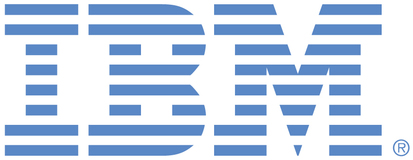
This portal is to open public enhancement requests for IBM Sterling products and services. To view all of your ideas submitted to IBM, create and manage groups of Ideas, or create an idea explicitly set to be either visible by all (public) or visible only to you and IBM (private), use the IBM Unified Ideas Portal (https://ideas.ibm.com).
Shape the future of IBM!
We invite you to shape the future of IBM, including product roadmaps, by submitting ideas that matter to you the most. Here's how it works:
Search existing ideas
Start by searching and reviewing ideas and requests to enhance a product or service. Take a look at ideas others have posted, and add a comment, vote, or subscribe to updates on them if they matter to you. If you can't find what you are looking for,
Post your ideas
Post an idea.
Get feedback from the IBM team and other customers to refine your idea.
Follow the idea through the IBM Ideas process.
Specific links you will want to bookmark for future use
Welcome to the IBM Ideas Portal (https://www.ibm.com/ideas) - Use this site to find out additional information and details about the IBM Ideas process and statuses.
IBM Unified Ideas Portal (https://ideas.ibm.com) - Use this site to view all of your ideas, create new ideas for any IBM product, or search for ideas across all of IBM.
ideasibm@us.ibm.com - Use this email to suggest enhancements to the Ideas process or request help from IBM for submitting your Ideas.

Closing this request based on engineering's feedback. Please continue to work with support via TS010989840 to look into the underlying issue.
Hi Boris, I have been discussing the request with engineering and their feedback is that such an enhancement would not lead to meaningful performance gains. Engineering would like to get more details on the underlying issues you are facing that led to the request to split the sequence generation, so I will put you in contact with our performance lead to discuss further.
Hi Aaron, I like to know the progress on this request.
My performance team had another test recently and i have attached a fresh AWR
Thank you for providing the AWR Boris. I'm discussing with engineering and will get back to you as soon as I can.
Hi Aaron, Thanks for getting back to me. Here is the message from my performance engineer:
Attached is the AWS when we increased our cache from 50k to 1 million for the sequence and it did not make any difference.
Please add a note along with the AWR that “Cache helps reducing contention if there is any at disk level. The contention reported here seems to be happening at cache level and that is possible. Its not the cache size but it is the TPS which can be served by oracle from the cache. The load generated by all sterling agent is around 13k hits per second to this sequence (AWR attached) and even 13k seems to be even too high for cache to return fast. If we have multiple sequence, we can use multiple cache and that’s how we are expecting to reduce the contention”
I hope this helps.
I would appreciate if you expedite this issue as having this performance bottleneck puts our next holiday into a risk.
Let me know if you have more questions.
Thanks
Boris
Hello Boris, I have discussed this request with engineering. Their initial feedback is similar to what looks like where the PMR left off - they would expect that increasing the cache size should have provided meaningful improvement and wanted further data on why that did not provide improvement, which I do not see posted to the PMR.
We have not seen this as a common issue among our customers, so any data you can share to help illustrate the issue and why the suggested optimizations were not sufficient will help us prioritize this.